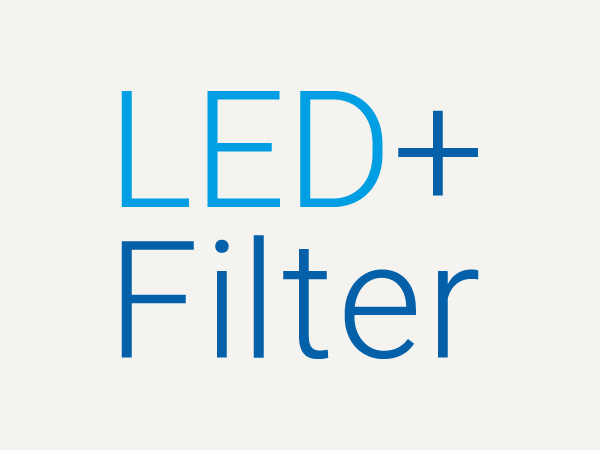BioLector XT模块
BioLector XT 高通量微型生物反应器可实时在线测量生物量、荧光信号、酸碱度(pH)和溶解氧(DO)等关键培养参数。该系统可精准调控振摇速度和培养室温度。如需要,用户可通过整合其他模块轻松升级系统。升级后,系统会配备所选组件,同时保留所有原有功能。仪器支持多模块组合。
微流控模块
BioLector XT 高通量微型生物反应器整合微流控(MF)模块后,可在一次培养实验中进行多达 32 个平行的高度灵活、pH调控和补料的培养。
“即用型微孔板(MTP)在生物安全柜内加样后以透气性无菌膜和密封膜密封。将BioLector XT气体处理器盖于孔板上,密封整个孔板以避免潜在污染。此时,板盖组合不受外部环境影响,可将其取出并置于 BioLector仪器中,仪器内部将始终保持无菌状态。
将板盖组合置于微型生物反应器后,通过气管进行连接。在培养过程中,可按需调控补料策略和pH值。采用全新BioLection软件, 可以轻松且用户友好地设置和查看过程导向的流加培养曲线,并可按需自由组合。
配置微流控(MF)模块的微型生物反应器,除保留全部原有标配功能以外,还可同时配备单个或所有BioLector XT气体模块,所有这些模块均可与 MF 模块结合使用。

厌氧培养模块
BioLector XT高通量微型生物反应器 配置厌氧培养模块后,可实时调节氮气的浓度和流量,严格控制厌氧发酵条件,研究人员无需将仪器放置于人工无氧环境,即可在无氧条件下进行培养。
微孔板(MTP)在厌氧工作站内加样后以透气性无菌膜和密封膜密封。将 BioLector XT气体处理器盖于孔板上, 密封整个孔板以避免潜在污染。此时,板盖组合不受外部环境影响,可将其取出并置于 BioLector仪器中,仪器内部将始终保持无菌状态。
将板盖组合置于微型生物反应器后,通过气管进行连接。在培养过程中,可按需调控补料策略和pH值。采用全新BioLection软件, 可以轻松且用户友好地设置和查看过程导向的流加培养曲线,并可按需自由组合。
配置微流控(MF)模块的微型生物反应器,除保留全部原有标配功能以外,还可同时配备单个或所有BioLector XT 模块 ,所有这些模块均可与 MF 模块结合使用。

CO2 上调模块
配置 CO2 上调模块后,微型生物反应器 可连续测定培养室内CO2水平,并自动调节进入培养室的CO2 流量。
如需在CO2调控条件下进行培养, BioLector 微型生物反应器 应选配 CO2 上调模块。该模块包括可安装于BioLector背部的额外 CO2 气体接头和置于培养室内的CO2 传感器。
传感器可连续测定培养室内 CO2 浓度,并自动调节 CO2充气流量,确保培养室内CO2 浓度水平稳定控制在0%-10%之间。配置该模块后,微型生物反应器原有所有标配功能均保持不变。
除了标配滤光片模块之外,还可额外添加三个荧光模块,分别用于测定生物量、pH值和溶解氧(DO)。系统可累计配置六大不同模块。

LED 滤光片
搭载LED/滤光片模块的微型生物反应器可测量更多荧光信号。 BioLector微型生物反应器 还可新增LED模块和两块可选配滤光片。
如需测量激发和发射光波长, BioLector微型生物反应器 应选配LED/滤光片模块,支持在 365nm-800nm 范围内自由选择波长范围。
新一代低pH值光学传感器可测定 4-6 范围内的pH值。
配置该模块后,微型生物反应器的原有所有标配功能均保持不变。
除了标配滤光片模块之外,还可额外添加三个荧光模块,分别用于测定生物量、pH值和溶解氧(DO)。系统可累计配置六大不同模块。

O2 下调模块
配置 O2 下调模块后,微型生物反应器 可连续测量培养室内氧气水平,并自动调节进入培养室的氮气流量。
如需在微氧条件下进行发酵, BioLector 微型生物反应器 应选配O2 下调模块,该模块包括可安装于BioLector背部的额外氮气接头和置于培养室内的氧传感器。
传感器可连续测量培养室内氧气浓度,并自动调节进入培养室的氮气流量,确保将培养室内O2浓度稳定控制在 2%-21% 之间。
配置该模块后,微型生物反应器的原有所有标配功能均保持不变。
除了标配滤光片模块之外,还可添加多达三个荧光模块,分别用于测定生物量、pH值和溶解氧(DO)。系统可累计配置六大不同模块。

O2 上调模块
配置 O2上调模块后,微型生物反应器 可连续测定培养室内氧气浓度,并自动调节氧气流量。
如需在富氧条件下发酵,BioLector微型生物反应器应选配 O2 上调模块,该模块包括可安装于BioLector背部的额外氧气接头和置于培养室内的氧传感器。
传感器可连续测量培养室内氧气浓度,并自动调节进入培养室的氧气流量,确保培养室内氧气浓度稳定控制在 21%-35% 之间。
配置该模块后,微型生物反应器的原有所有标配功能均保持不变。
除了标配滤光片模块之外,还可额外添加三个荧光模块,分别用于测定生物量、pH值和溶解氧(DO)。系统可累计配置六大不同模块。

